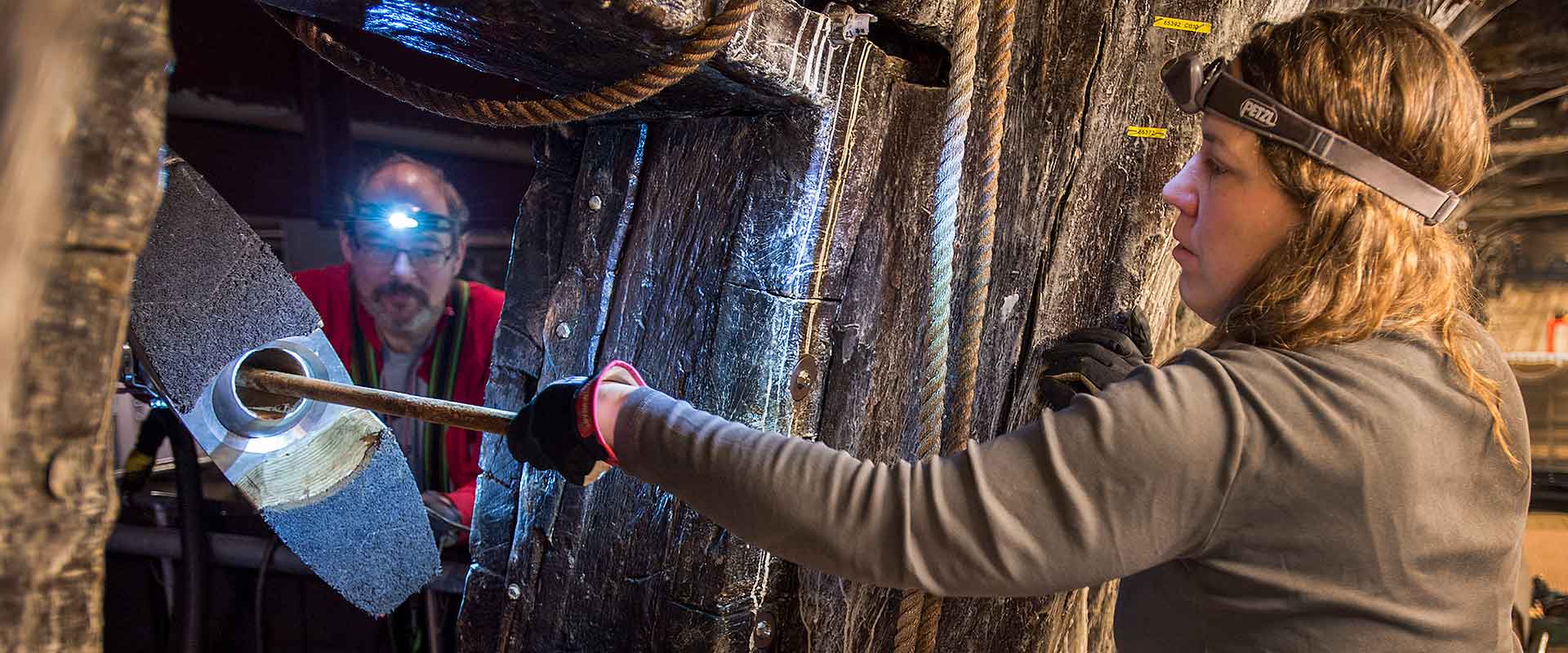It took seven years to replace 5,000 rusty iron bolts on Vasa. With much lighter bolts of steel the ship lost about 8 tons in the process. The bolt-changing project was completed in 2018 and is estimated to last for 150 years.
Vasa was originally held together with iron rivets which corroded away during the hundreds of years of burial. In order to raise and give structural stability to the ship, more than 5,000 mild-steel bolts were inserted into the original rivet holes in the 1960s.
Over time, the bolts have corroded and the ship has deformed. The corrosion weakens the bolts and they have deformed along with the ship. Corroding iron also causes chemical reactions in the wood which can result in loss of wood strength.
New corrosion-resistant bolts
In 2011, the Vasa Museum and the Swedish materials technology group Alleima, previously Sandvik Materials Technology, initiated a long-term research and development project to replace the bolts. Specially-designed bolts of high alloy corrosion-resistant steel were developed in a joint collaboration. The steel, SAF 2707 HD, is normally used in the demanding oil-and-gas industries and can withstand exposure to the harshest environments.
The material has many advantages. Its high mechanical strength means that the bolts are lighter in weight, which in turn reduces the total weight of the ship, and its high corrosion-resistance reduces the risk of chemical reactions in the wood. It is also an environmentally friendly alternative, since steel is recyclable.
Each bolt was a challenge
Replacing the bolts was complicated. Some of the 1960s bolts were stuck fast or sat in inaccessible places. Each bolt was a new challenge. The old bolt was pulled out by a jack, sometimes with the help of a sledgehammer. Corrosion and other loose material were cleaned out using a steel brush and vacuum cleaner and the hole was enlarged slightly to take the new bolts, which had a slightly larger diameter than the originals. To assist insertion of the new bolt, the hole wass then sprayed with soapy water solution, an environmentally-friendly lubricant.
Gentler to the ship
The new bolt design is much more complex than the old. While the 1960s bolts were composed of a bolt, washer and nut, the new bolts have eight parts: a tube, threaded rod, compression spring, nut, bolt head, a special washer to hold the spring and a cylindrical cone. First, the tube is pulled into the bolt hole by a jack. The threaded rod is then inserted into the tube and fastened to the washer and nut on the inside of the ship. The spring which sits inside the nut makes it possible to determine just how tightly the bolts are held, which is gentler on the ship.
The new bolts will not need to be replaced for another 150 years.
